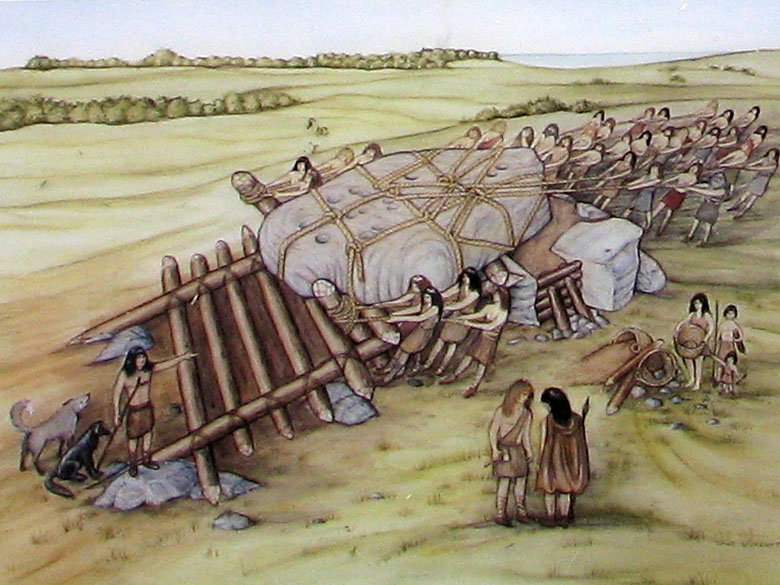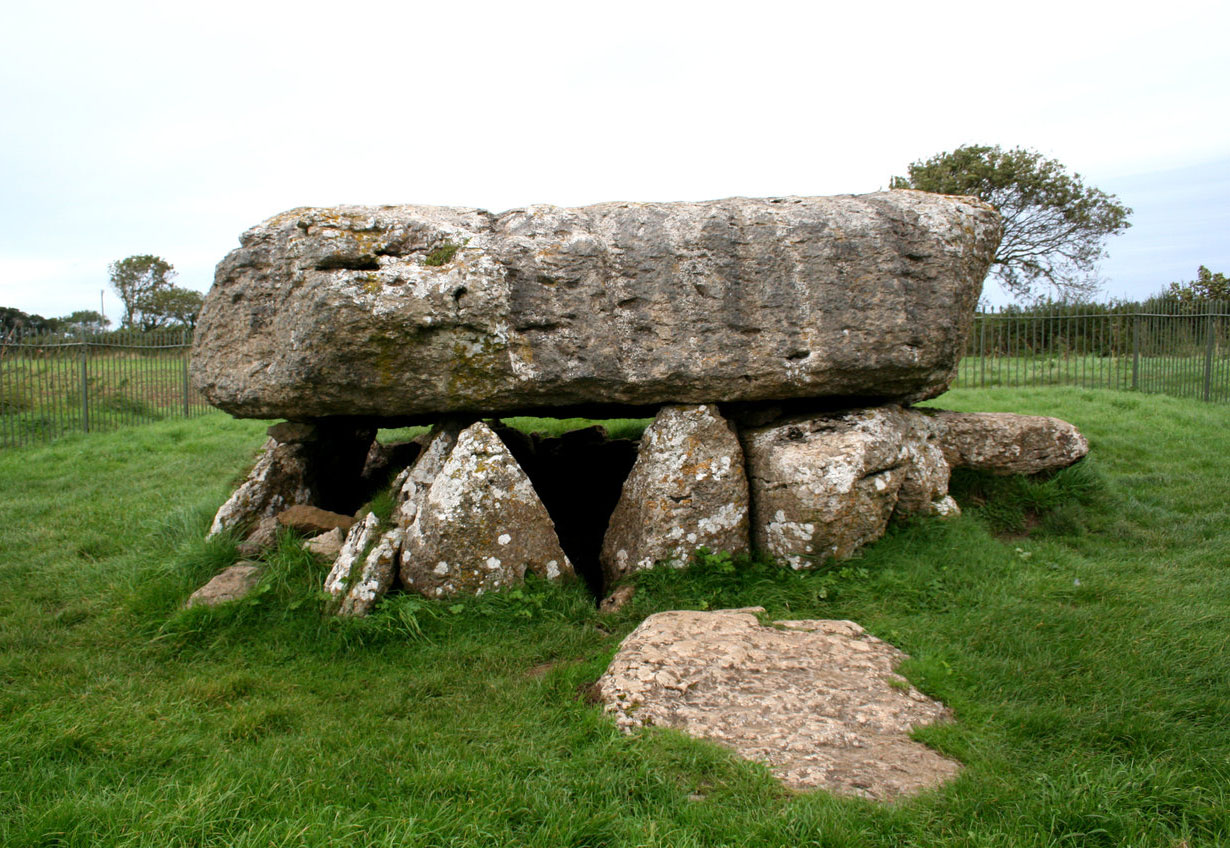History
The tomb in Lligwy was created around 2500-2000 BC, at the end of the Neolithic era and served as a collective burial place for the agricultural community. The chamber was excavated during archaeological research in 1909. Inside, there were found unburnt human and animal bones, fragments of ceramics, numerous shells of snails and clams, and some flints. In general, the remains of fifteen to thirty people, both children and adults, were found in the chamber. Part of the ceramics seems to come from the Bronze Age and at least one of the layers may indicate the re-use of the tomb later.
Architecture
The burial chamber consists of eight stones of various shapes, supporting a huge top boulder (capstone) measuring 5.6 meters long by 4.8 meters wide, 1.1 meters thick and an estimated weight of about 25 tons. It is erected above a natural crack in the rock, thanks to which the chamber was about 1.8 meters high. Originally, the whole was covered with a mound (cairn) of earth or stones, and the entrance was created from the east. During the study, it was found that the remains of about 30 people were buried in the tomb, many animal bones, mussel shells, and numerous fragments of ceramics were found.
Current state
The burial chamber is under the care of Cadw, it is available to visitors free of charge throughout the year, except for holidays. It is located very close to the road and can be reached on foot from the car park at the edge of the road, about 1.2 km north of Llanallgo. The Lligwy capstone is considered one of the largest and heaviest in the whole of Britain.
bibliography:
Castleden R., Neolithic Britain: New Stone Age sites of England, Scotland and Wales, London 1992.
The Royal Commission on The Ancient and Historical Monuments and Constructions in Wales and Monmouthshire. An Inventory of the Ancient Monuments in Anglesey, London 1937.



